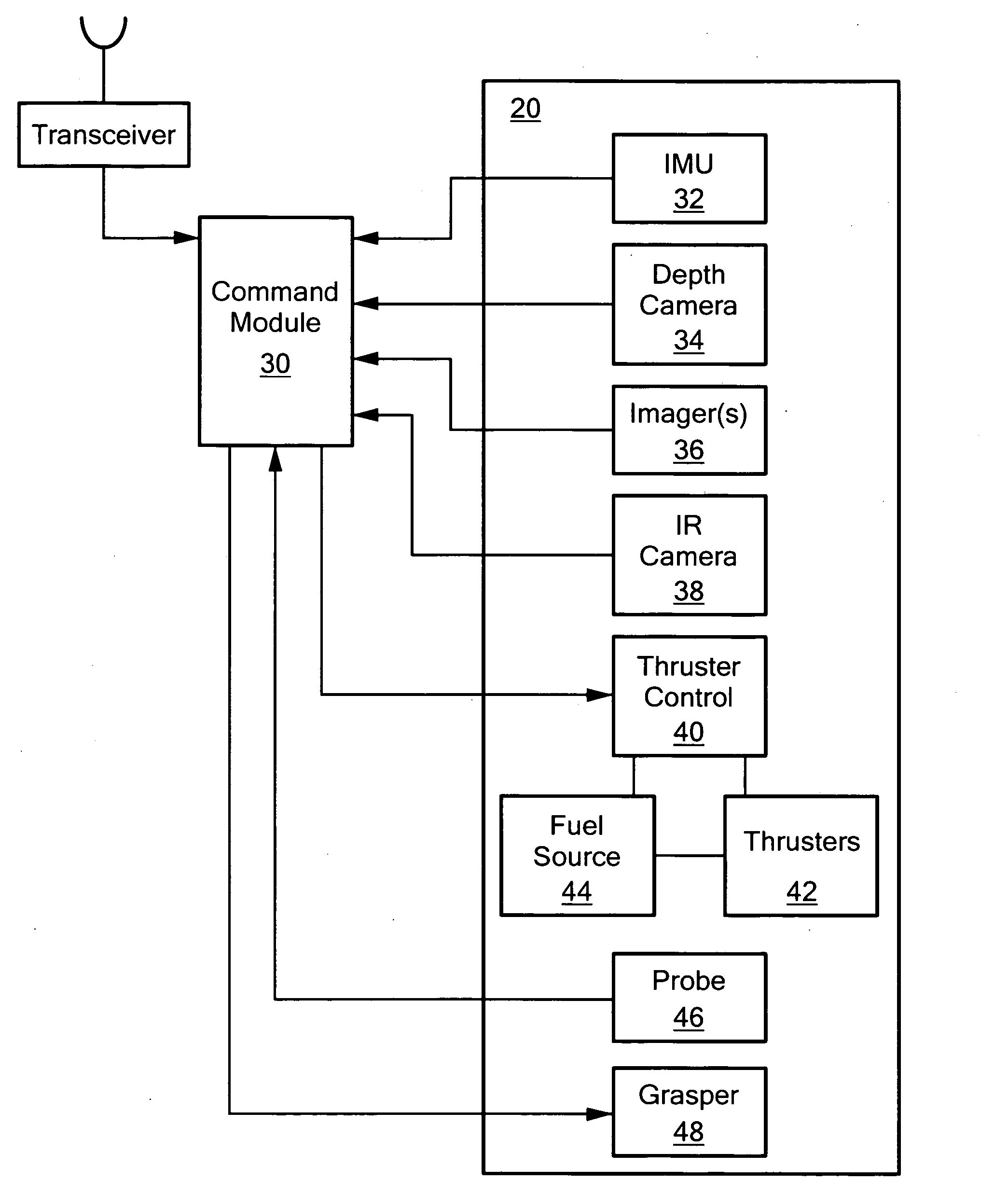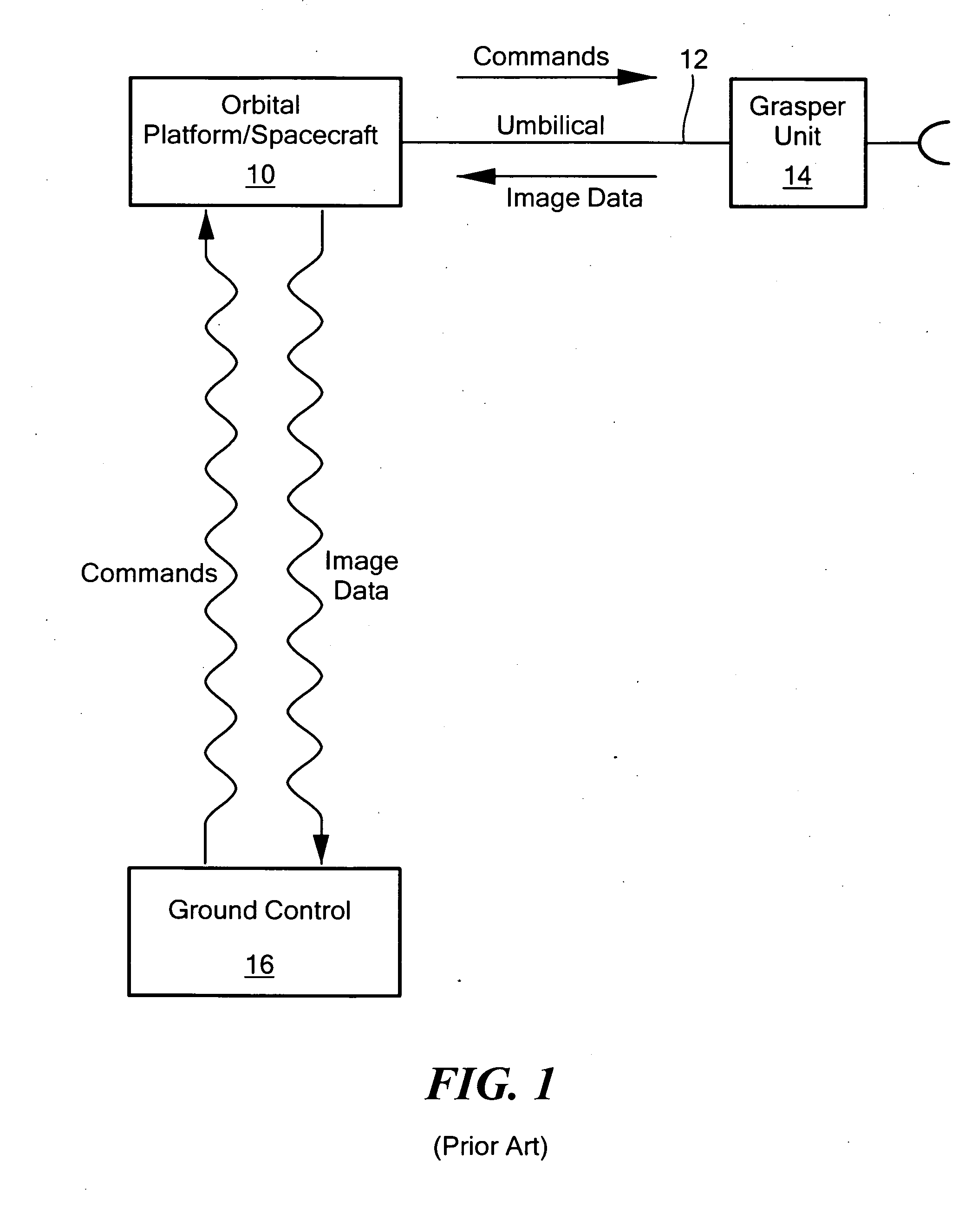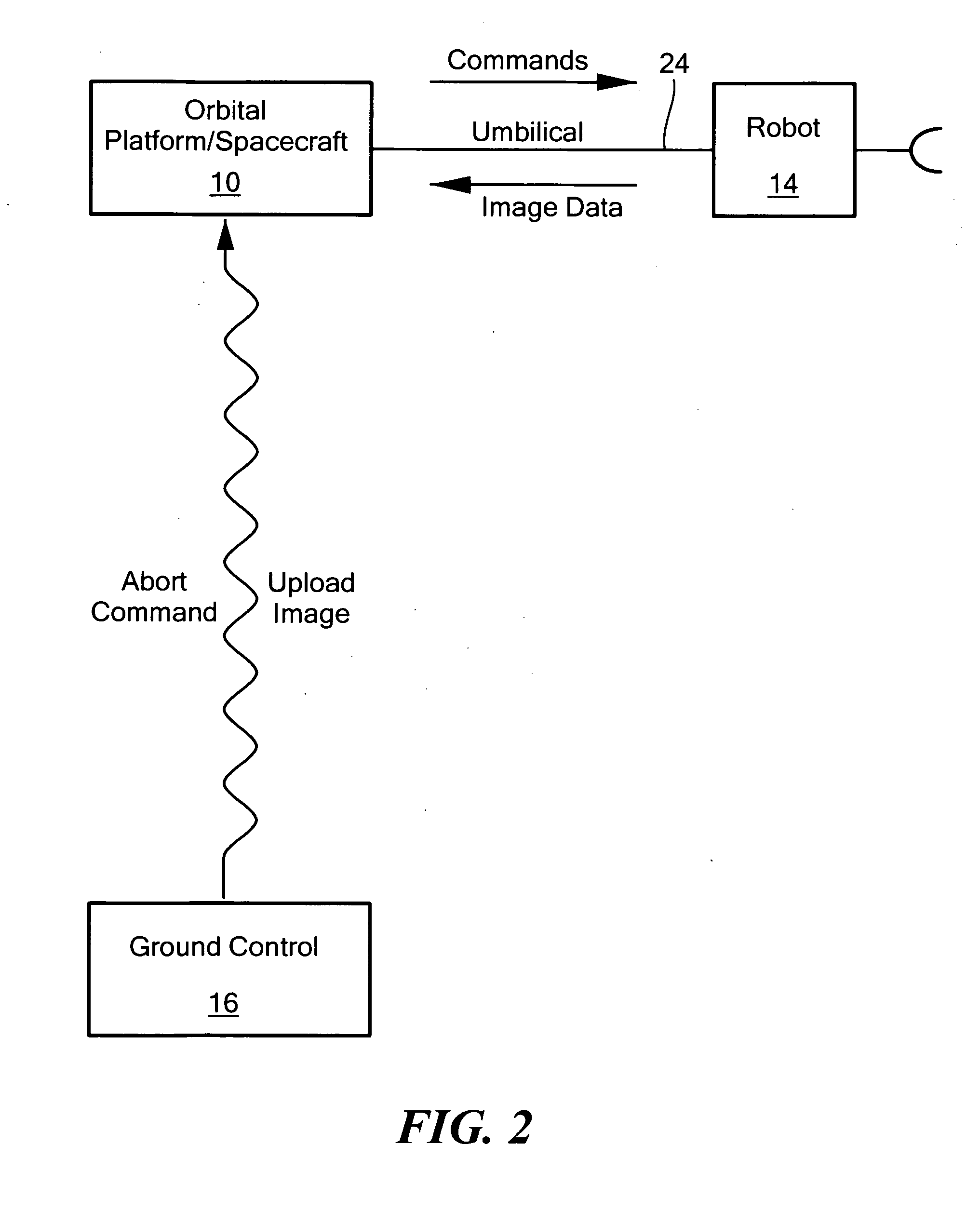Spacecraft system for debris disposal and other operations and methods pertaining to the same
a technology for spacecraft and debris, applied in the direction of tools, transportation and packaging, cosmonautic vehicles, etc., can solve the problems of difficult troubleshooting of such failures, and achieve the effect of minimal damage to satellites
- Summary
- Abstract
- Description
- Claims
- Application Information
AI Technical Summary
Benefits of technology
Problems solved by technology
Method used
Image
Examples
Embodiment Construction
[0061]Aside from the preferred embodiment or embodiments disclosed below, this invention is capable of other embodiments and of being practiced or being carried out in various ways. Thus, it is to be understood that the invention is not limited in its application to the details of construction and the arrangements of components set forth in the following description or illustrated in the drawings. If only one embodiment is described herein, the claims hereof are not to be limited to that embodiment. Moreover, the claims hereof are not to be read restrictively unless there is clear and convincing evidence manifesting a certain exclusion, restriction, or disclaimer.
[0062]FIG. 1 shows a prior art system (see for example, U.S. Pat. No. 7,207,525 incorporated herein by this reference) where an orbital platform 10 pays out umbilical 12 attached to grasper unit 14. Images acquired by grasper unit 14 are transmitted via orbital platform 10 to manned ground control systems 16 which issued co...
PUM
 Login to View More
Login to View More Abstract
Description
Claims
Application Information
 Login to View More
Login to View More - R&D
- Intellectual Property
- Life Sciences
- Materials
- Tech Scout
- Unparalleled Data Quality
- Higher Quality Content
- 60% Fewer Hallucinations
Browse by: Latest US Patents, China's latest patents, Technical Efficacy Thesaurus, Application Domain, Technology Topic, Popular Technical Reports.
© 2025 PatSnap. All rights reserved.Legal|Privacy policy|Modern Slavery Act Transparency Statement|Sitemap|About US| Contact US: help@patsnap.com



